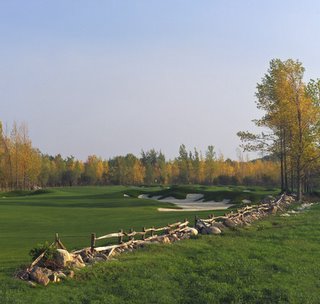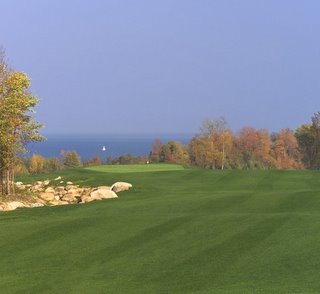The end of Bamberger
Interestingly, I've had at least one reader note they bought one of Michael Bamberger's books after I mentioned it on my sight a week ago. Tonight I finished This Golfing Life, which I've been plugging away at for regular intervals over the last few nights and afternoons.
The book, like all of Bamberger's writing, is full of life, and the exploration of the game of golf. He might get a little overly sentimental in the last section, but I enjoyed it nonetheless. One of the most poignant portions of the book was Bamberger's comments on his career within the perspective of Brad Faxon's time on tour. Bamberger caddied for Faxon in 1985 and reflects on the similarities between golf and writing.
That's when I realized that making a living from a typewriter or from a set of golf clubs is about the same thing. You can't fake the results in either. You're on your own. The writer and the golfer, they both know, deep down, whether they're getting better or not ... The writing life, the golfing life is rooted in optimism.
Interestingly, Bamberger says earlier in the final section that, "Now, with the web and all, you can start your own career. Mentoring is not a growth industry." I've never met Michael Bamberger, but his writing has been a nice guide for me in my writing career. If you're going to be a good writer or reporter, you better know exactly what you are up against. Writers exist in the public realm and though they don't win by dropping birdies or slamming drivers up the middle, reporting is equally as revealing.
Bamberger may be tarnished in some eyes because of his role in the Michelle Wie fiasco. I must admit to being torn by what he did. But whatever happened, it doesn't overshadow his great writing I've had the good fortune to experience.
Have a great New Years and I'll catch up with you again in 2006, with a new hopes and a new golf season on the horizon.














 Blog Directory
Blog Directory
